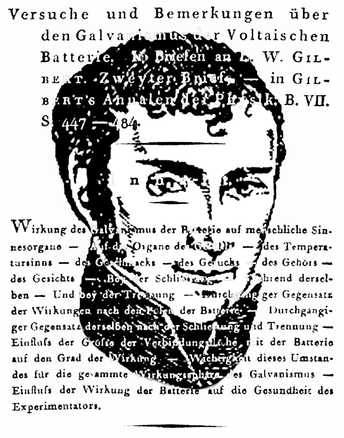Johann Wilhelm Ritter1776–1810
Ritter applied electrical discharges (galvanic stimulation) to the tongue and provided experimental support for warmth and cold as sensory qualities. His first reports regarding warm and cold were in 1801: “Another contrast in sensation is that between warm and cold… if one brings into contact a zinc pole on the tongue and silver on the gums, that on the tongue feels very clearly warm, but it feels cold with silver in the same arrangement”. Thus, stimulation by the positive pole produced the sensation of warmth, whereas the negative pole resulted in experiencing cold. In 1805, Ritter extended the studies on temperature sensitivity on the tongue as well as the finger; he found that the sensation could vary according to the intensity and duration of the current. His general conclusion was that: “one must consider the sense of temperature (for warmth and cold) as essentially different from the common sense, and as a special sense”. Galvanic stimulation resulted in a short shock as well as the particular sensation. In the case of temperature sensitivity, Ritter reported that the shock remained constant even when the sensation changed from warm to cold. Rather than merely speculating that warmth and cold are separate sensory qualities, Ritter afforded experimental evidence for this via his studies of galvanic stimulation. He is shown in the title and initial text of an article on galvanic stimulation.
